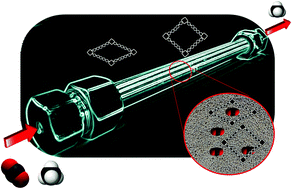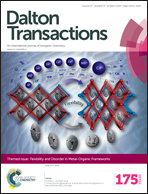Molecular separations with breathing metal–organic frameworks: modelling packed bed adsorbers†
Abstract
Various metal–organic framework (MOFs) adsorbents show peculiar adsorption behaviour as they can adopt different crystal phases, each phase with its own adsorption characteristics. Besides external stimuli such as temperature or light, different species of guest adsorbate can trigger a transition (breathing) of the host structure at a different pressure. Such phase transitions also occur during dynamic separations on a packed bed of adsorbent, where the concentrations of the adsorbates vary throughout axial column distance and time. This work presents a general strategy to model the adsorption behavior of such phase changing adsorbents during column separations and focuses on remarkable model predictions for pure components and binary mixtures in diluted and non-diluted conditions. During binary breakthrough experiments, the behaviour of flexible adsorbents is quite complex. A succession of complete or even partial phase transformations (resulting in phase coexistence) can occur during the adsorption process. A variety of unusual breakthrough profiles is observed for diluted binary mixtures. Simulations reveal at least five types of breakthrough profiles to emerge. The occurrence of these cases can be rationalized by the hodograph technique, combined with the phase diagram of the adsorbent. The remarkable experimental breakthrough profiles observed for ortho-xylene/ethylbenzene (diluted) and CO2/CH4 (non-diluted) separation on the flexible MIL-53 framework can be rationalized by application of the proposed model strategy.

- This article is part of the themed collection: Flexibility and Disorder in Metal-Organic Frameworks

 Please wait while we load your content...
Please wait while we load your content...